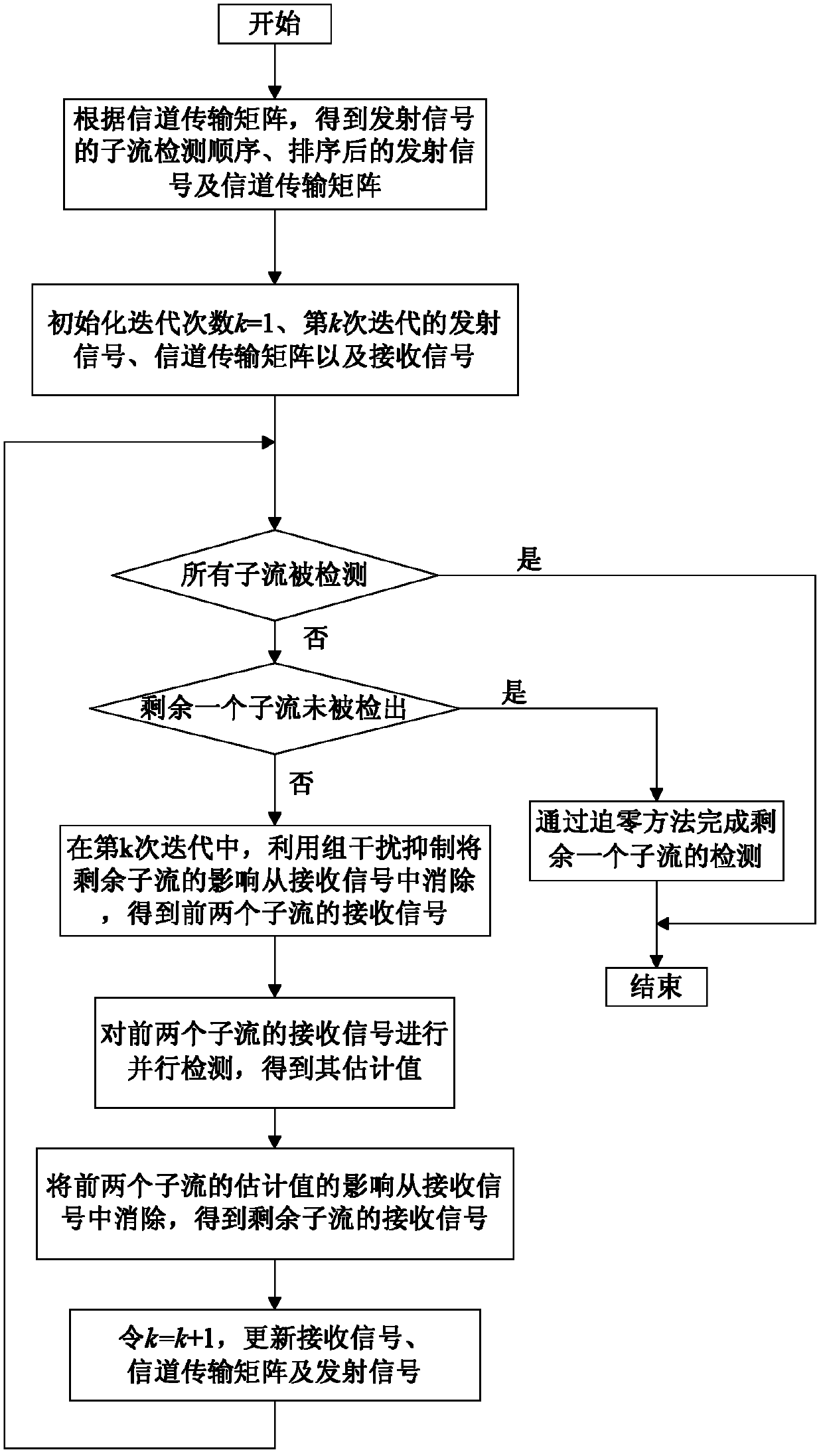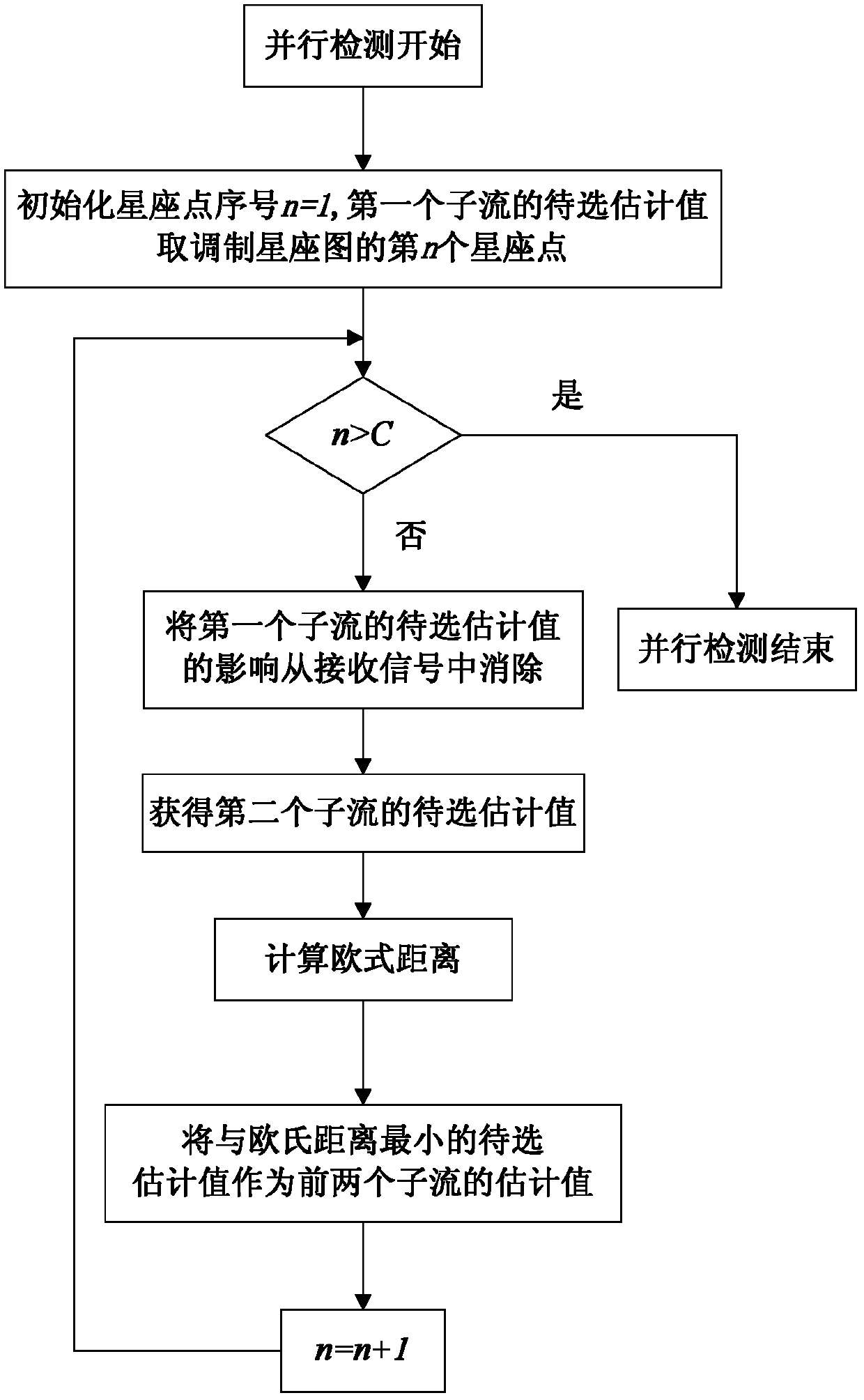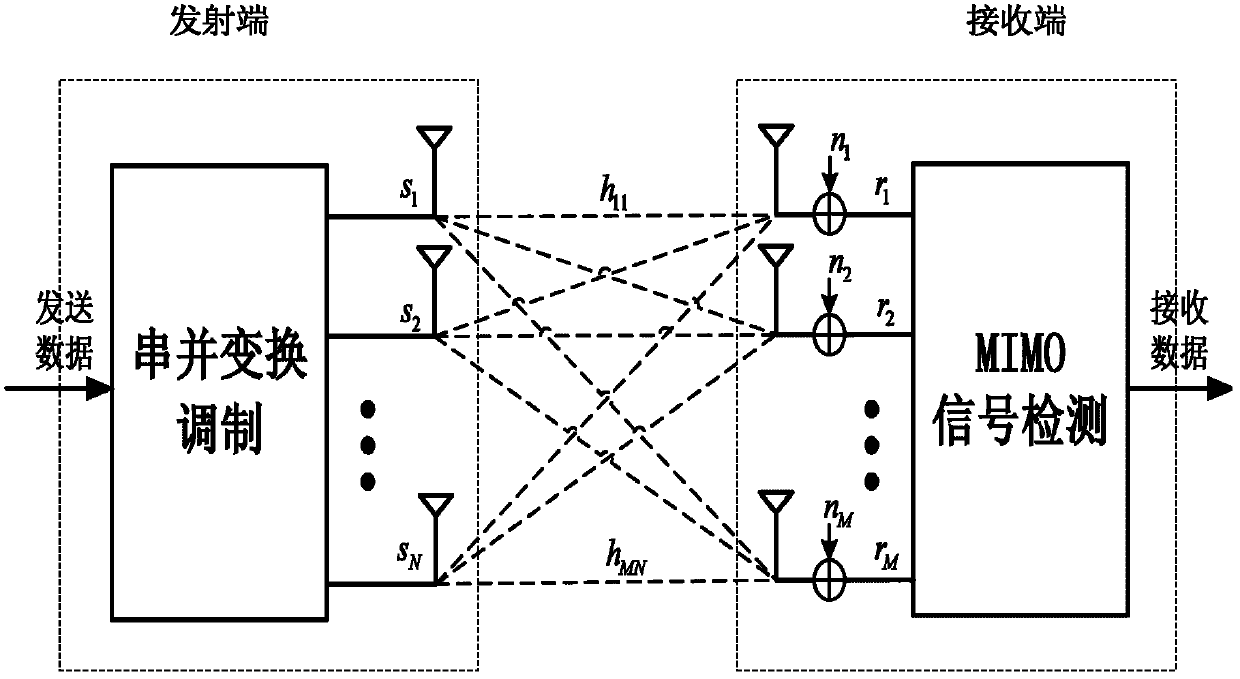MIMO (Multiple Input Multiple Output) step-by-step parallel detection method
A detection method and a multi-output technology, applied in diversity/multi-antenna systems, space transmit diversity, shaping networks in transmitters/receivers, etc., can solve matrix pseudo-inverse calculations with high complexity, increased complexity, and continuous sorting Interference eliminates some problems such as error propagation in OSIC, and achieves the effect of improving detection performance, reducing complexity, and suppressing error propagation
- Summary
- Abstract
- Description
- Claims
- Application Information
AI Technical Summary
Problems solved by technology
Method used
Image
Examples
Embodiment Construction
[0018] The present invention will be further described below with reference to the accompanying drawings.
[0019] The multiple-input multiple-output MIMO system model used in the present invention is as follows: image 3 As shown, after the transmitted data is modulated by serial-to-parallel conversion, the transmitted signal at the transmitting end is obtained as s=[s 1 ,…,s N ] T , the transmitted signal reaches the receiving end after experiencing channel fading, and then superimposed on the noise signal n=[n 1 ,...,n M ] T , the corresponding received signal is r=[r 1 ,...,r M ] T , and then use the MIMO signal detection of the present invention to obtain the received data. where r i , i=1,..., M is the received signal of the receiving antenna i, s j , j=1,...,N is the transmit signal of transmit antenna j, that is, the jth substream of transmit signal s; n i , i=1, ..., M is the noise signal of the receiving antenna i, N is the number of transmitting antennas,...
PUM
 Login to View More
Login to View More Abstract
Description
Claims
Application Information
 Login to View More
Login to View More - R&D
- Intellectual Property
- Life Sciences
- Materials
- Tech Scout
- Unparalleled Data Quality
- Higher Quality Content
- 60% Fewer Hallucinations
Browse by: Latest US Patents, China's latest patents, Technical Efficacy Thesaurus, Application Domain, Technology Topic, Popular Technical Reports.
© 2025 PatSnap. All rights reserved.Legal|Privacy policy|Modern Slavery Act Transparency Statement|Sitemap|About US| Contact US: help@patsnap.com



